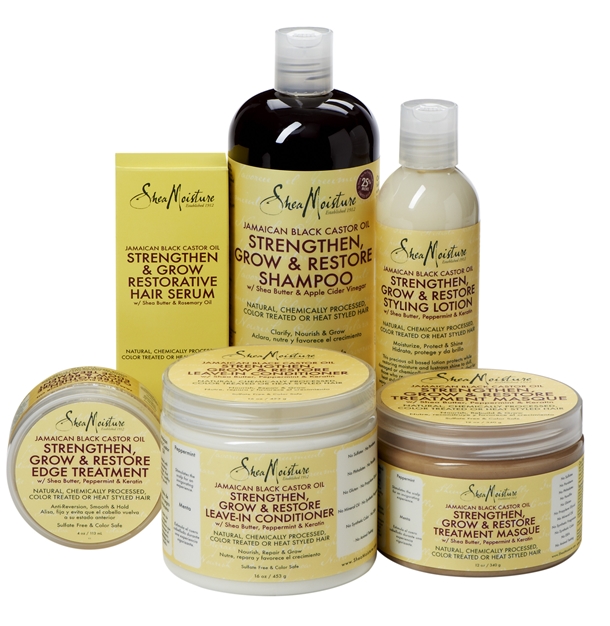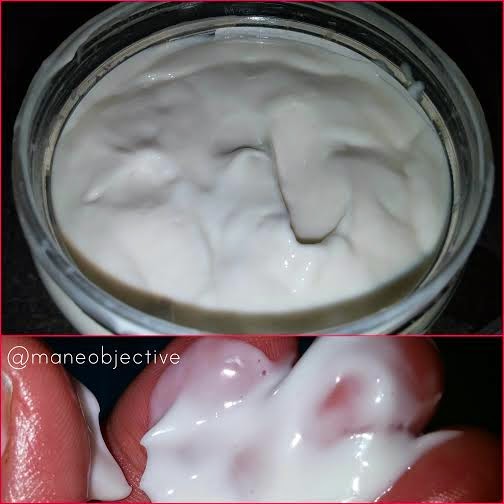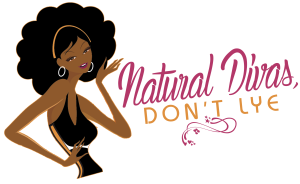Stop by my Tee Shirt Shop and See my new designs!
This is a place that we talk about hair, hair products and reviews. We can even share about everyday life as it happens. Hair is a woman's crowning glory and we take it seriously here. Feel free to share your hair journey with me. Post a question. Share your ideas!
Adsense
Sunday, July 5, 2015
Saturday, July 4, 2015
Natural Hair Tee Shirts
New Natural Hair Tee Shirt from my Tee Shirt Store! $16.00
Natural Hair Tee Shirt Shop
crowningglorycoilsandkinkstees.spreadshirt.com|By Lady Summerset
Wednesday, June 10, 2015
Shea Moisture Jamaican Black Castor Oil Strengthen Grow & Restore Leave-In Conditioner

I received this product in my May's Curl Kit box. This is one of the best products I've received in my two-year subscription with them.
- Hair Type: All Hair Types, Coarse
- Used For: Repairing, Softening, Detangling, Strengthening
- Product Form: Cream
- Health Facts: Paraben-Free, Sulfate-Free, Phthalate-Free
- Product Style: Leave-in conditioner
Let me preface this with, first and foremost, I am NOT an avid fan of Shea Moisture products. My 3c/4 tresses just didn't seem to care for their products. However, I do repurchase the Shea Moisture Souffle.
I simply love the way this product smells on my hair. It is a lotion-like product and goes on smoothly and you do not need to apply a lot.
I use the product on wet or damp hair. The shine is off the charts and the pliability and softness of my hair after using this is amazing. Product is not sticky or tacky to the touch after being applied to hair.

Ingredients:
Water , Ricinus Communis Seed Oil , Stearyl Alcohol , Cetyl Alcohol , Behentrimonium Chloride , Butyrospermum Parkii ButterShea, Certified Organic , Cocos Nucifera OilCoconut , Panthenol , Dicaprylyl Ether , Hydroxyethylcellulose , GlycerinVegetable , Simmondsia Chinensis Seed OilJojoba , Adansonia Digitata Seed Oil , Hydrolyzed Keratin , Mauritia Flexuosa Fruit Oil , Tocopherol , Aloe Barbadensis Leaf Juice , Yeast Extract , Hydrolzyed Vegetable Protein , PG-Propyl Silanetriol , Mentha Piperita Leaf ExtractPeppermint , FragranceEssential Oil Blend , Hydrolyzed Rice Protein , Butylene Glycol , Niacin , Dextran , Acetyl Tetrapeptide-3 , Trifolium Pratense Flower ExtractClover , Vinegar , Caprylhydroxamic Acid , Caprylyl Glycol , Macadamia Ternifolia Seed Oil
Benefits of ingredients:
Usage:
A little goes a long way. I like best using on extremely wet hair. A quarter-size amount to each section (8). Can be easily reactivated. I use daily (applied -lightly - again all over -- at night and spritz with water in the morning).
- water
- castor oil: thick, highly viscous oil with antibacterial, antifungal, and humectant properties. It is also a great moisture sealant, and promotes hair thickening and growth.
- stearyl & cetyl alcohol: "fatty alcohols" -- NOT to be confused with drying alcohols such as ethyl. Both act as a lubricants, thickeners, and emollients. They also give conditioner its velvety feel without making hair greasy, and are additionally used to keep product ingredients from separating.
- behentrimonium chloride: quaternary ammonium compound and close cousin of cetrimonium chloride. Also penetrates the hair, conditions, and acts as an anti-static and anti-microbial agent.
- shea butter: emollient fat from the nut of the East or West African shea nut tree used to moisturize and soften hair.
- coconut oil: oil high in saturated fats (which is why when cold, it is solid). One of the few known oils to penetrate the hair shaft and truly moisturize hair. Coconut oil helps to moisturize, seal, and prevent breakage.
I have found that it leaves my hair remarkably with less shrinkage than my beloved Camille Rose Naturals' leave-in. In fact, it's not necessary for me to have to use a styler when using this product alone! Hair looks vibrant and healthy.
Usage:
A little goes a long way. I like best using on extremely wet hair. A quarter-size amount to each section (8). Can be easily reactivated. I use daily (applied -lightly - again all over -- at night and spritz with water in the morning).
Leaves my hair moisturized and unlike some of Shea Moisture's other products doesn't leave my hair feeling parched after my hair has dried.

Side Notes:
- I found it not necessary to use the Styling Lotion since the Leave-In performed the same way.
- PLAYS well with Kinky Curly Custard
- If you are protein-sensitive, this item will not work to your satisfaction. This group of products are full of protein. -- This is why you will get complaints from other users saying that it "dried" out their hair or hair felt parched.
Keravis Protein
Keravis is a silicone-derived ingredient. Another name that it is called by is: hydrolyzed vegetable protein PG-propyl silanetriol. Keravis protein is a vegetable-derived protein and silicone blend that was designed specifically to strengthen, fortify, and revitalize dry and damaged hair.
Keravis' composition places this product on the Curly Girl's "not friendly" list. However, please note that Keravis is able to penetrate the hair's cortex which enables it to help to build strength inside the strand while it both coats and conditions the hair strand.
This is important because this will yield tensile strength which will help shield your tresses from dyes, environment, styling, and stressful daily hair routines. To "cone" or not to "cone?" My tresses love cones, so I will be a continued user.
Pros:
- Easily Accessible
- Price Point - Excellent - 16 ounces for $10.99
- Moisture Factor is Good
- Fragrance: Loved
- Less Shrinkage than more other leave-ins
Cons:
- Product Needs to be in a Bottle Not Jar
- Contains Keravis Protein -- Not Curly Girl (method) Friendly
Will I Re-purchase: Yes!
Loving the product!
Please comment or share your experience with this product!
Happy Curls to You!
©Copyright 2015-10-6 Crowning Glory Coils and Kinks - All Rights Reserved
©Copyright 2015-10-6 Crowning Glory Coils and Kinks - All Rights Reserved
Wednesday, May 13, 2015
Crowning Glory!
Sometimes we can find ourselves tiring of our natural hair journey. This is a second installment of my "Hair Inspiration." I have scoured the virtual world to share with you some inspiration. Long, short, wavy, coily, kinky and nappy, natural hair expresses the soul of the woman who it adorns.
I





In many traditional cultures, communal grooming was a social event when a woman could socialize and strengthen bonds between herself, other women and their families. Historically, hair braiding was not a paid trade. Since the African diaspora, in the 20th and 21st centuries it has developed as a multi-million dollar business in such regions as the United States and western Europe. An individual's hair groomer was usually someone whom they knew closely. Sessions included shampooing, oiling, combing, braiding, and twisting, plus adding accessories.

For shampooing, black soap was widely used in nations in West and Central Africa. Additionally, palm oil and palm kernel oil were popularly used for oiling the scalp. Shea butter has traditionally been used to moisturize and dress the hair: a yellow variety is popular in West Africa, and a white variety in East Africa. In North Africa, Argan Oil was applied to the hair and/or scalp for protection against the arid environment and intense sun.
It's a common tale shared by women of color whose natural hair can attract stares, curiosity, comments and the occasional stranger who desires to reach out and touch. The reaction to such fondling can range from amusement to outrage over the invasion of personal space.-- CNN Report: "Can I Touch It?"--Lisa Respers France, CNN
I

- Natural Hair: Afro-textured hair is a term used to refer to the natural hair texture of certain populations in Africa, the African diaspora and Asia, when this hair has not been altered by hot combs, flat irons, or chemicals (through perming, relaxing, or straightening).
- In many post-Columbian, Western societies, adjectives such as "wooly", "kinky", "nappy", or "spiralled" have frequently been used to describe natural afro-textured hair. More recently, however, it has become common in some circles to apply numerical grading systems to human hair types. There are also natural haircare products used today for natural hair, such as, Cantu,Shea Moisture, African Pride, and Carol's Daughter Products.
- One popular version of these systems classifies afro-textured hair as 'type 4' (straight hair is type 1, wavy type 2, and curly is type 3, with the letters A, B, and C used to indicate the degree of coil variation within each type) with the subcategory of type 4C being most exemplary of this hair type (Walker, 1997). However, afro-textured hair is often difficult to categorize because of the many different variations among individuals. Those variations include pattern (coils, springs, zig zags, s-curves), pattern size (watch spring to chalk), density (sparse to dense), strand diameter (fine, medium, wide), and feel (cottony, wooly, spongy). -- Wikipedia
Historically, sub-Saharan Africans, as in every culture, developed hairstyles that defined status, or identity, in regards to age, ethnicity, wealth, social rank, marital status, religion, fertility, manhood, and death. Hair was carefully groomed by those who understood the aesthetic standard, as the social implications of hair grooming were a significant part of community life. Dense, thick, clean, and neatly groomed hair was something highly admired and sought after. Hair groomers possessed unique styling skills allowing them to create a variety of designs that met the local cultural standards. Hair was usually dressed according to local culture. - Wikipedia





For shampooing, black soap was widely used in nations in West and Central Africa. Additionally, palm oil and palm kernel oil were popularly used for oiling the scalp. Shea butter has traditionally been used to moisturize and dress the hair: a yellow variety is popular in West Africa, and a white variety in East Africa. In North Africa, Argan Oil was applied to the hair and/or scalp for protection against the arid environment and intense sun.
It's a common tale shared by women of color whose natural hair can attract stares, curiosity, comments and the occasional stranger who desires to reach out and touch. The reaction to such fondling can range from amusement to outrage over the invasion of personal space.-- CNN Report: "Can I Touch It?"--Lisa Respers France, CNN
When looking in the mirror, remember that your natural hair is beautiful. Whether it is coily, wavy, highly textured, loosely curly, or cottony it is the crown you wear!
Please comment or write about your natural inspiration or journey!
Happy Curls to You!
©Copyright 2015-13-5 Crowning Glory Coils and Kinks - All Rights Reserved
Saturday, May 9, 2015
Subscribe to:
Posts (Atom)















